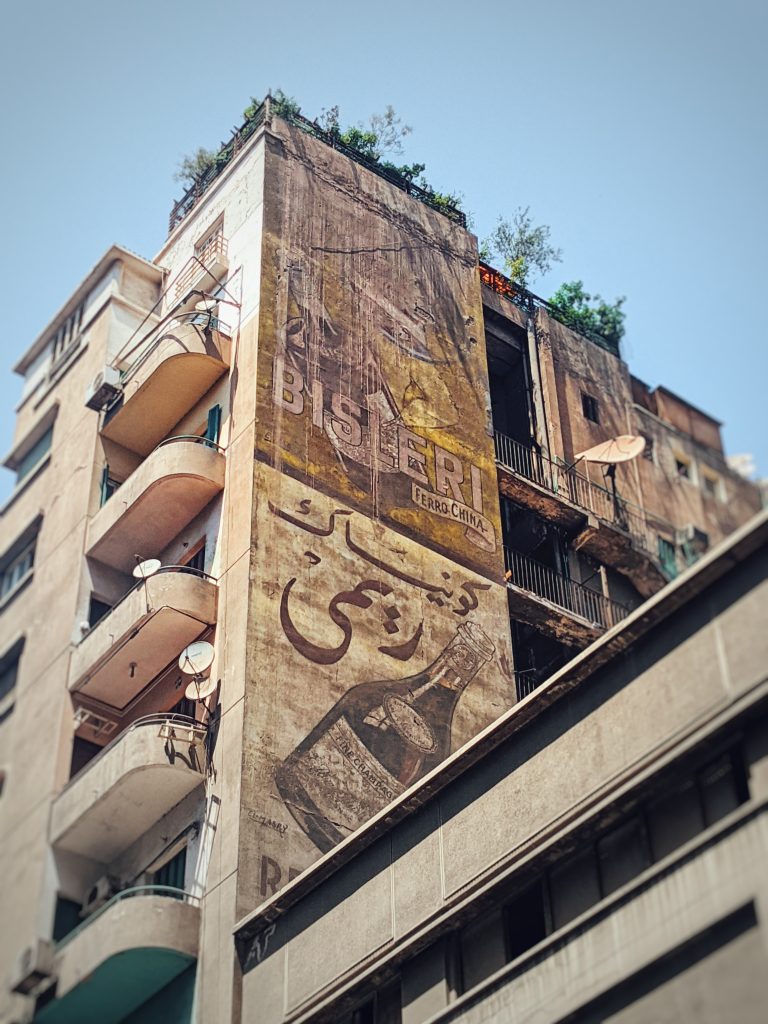Humans have marked their presence in the world by painting on walls for thousands of years, particularly in Egypt. With the prehistoric paintings of human figures and giraffes in Gilf Kiber’s Cave of Swimmers dating back possibly 10,000 years and the more familiar pharaonic depictions of hunting, farming and other every day activities uncovered in Ancient Egyptian tombs. We have an insight into the lives and thoughts of those long-gone and of historical periods so unfamiliar to our own. Amidst Cairo’s bustling streets too, are also glimpses of the past in the often beautiful and slowly fading hand-painted advertisements adorning the walls of buildings.
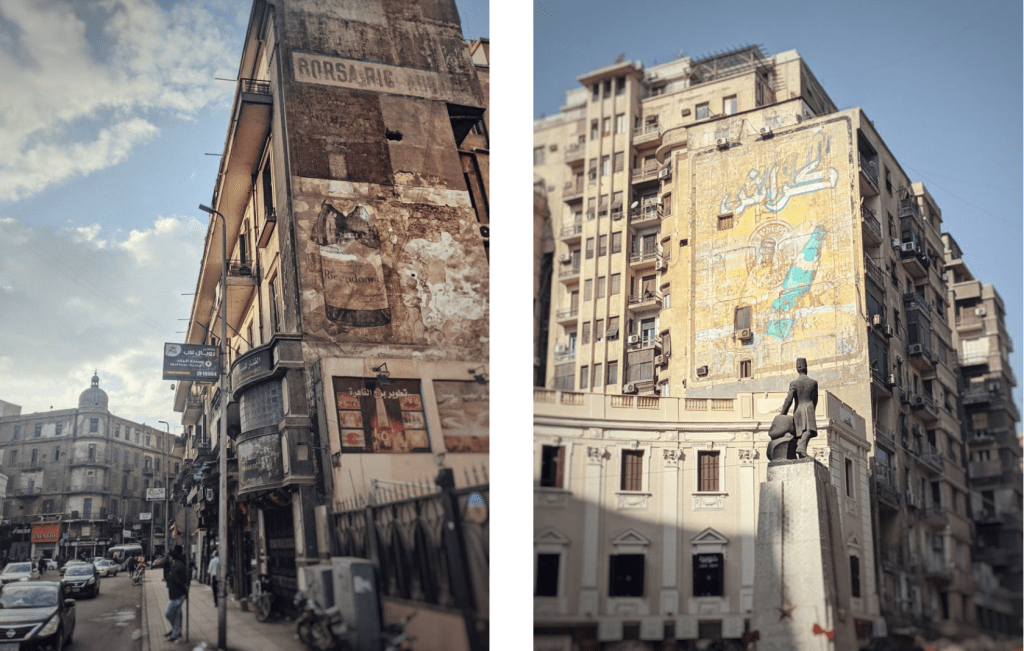
Beginning in the early twentieth-century, with the development of capitalism in Egypt and its absorption into the world economy, painted advertisements for tea, cigarettes, alcohol, cars, and other consumer goods began to appear in middle and upper-class areas of Cairo and Alexandria.

These large and colourful advertisements that can still be found throughout the neighbourhoods of Azabakeya, Bulaq, Moski, and downtown Cairo date from around 1920 all the way until 1980 when printed and photographic technologies nudged out the painters of these delicately painted adverts from the market. These adverts from different periods showcase not just different products and artistic styles, but give an insight into these different historical periods and the changes underway.
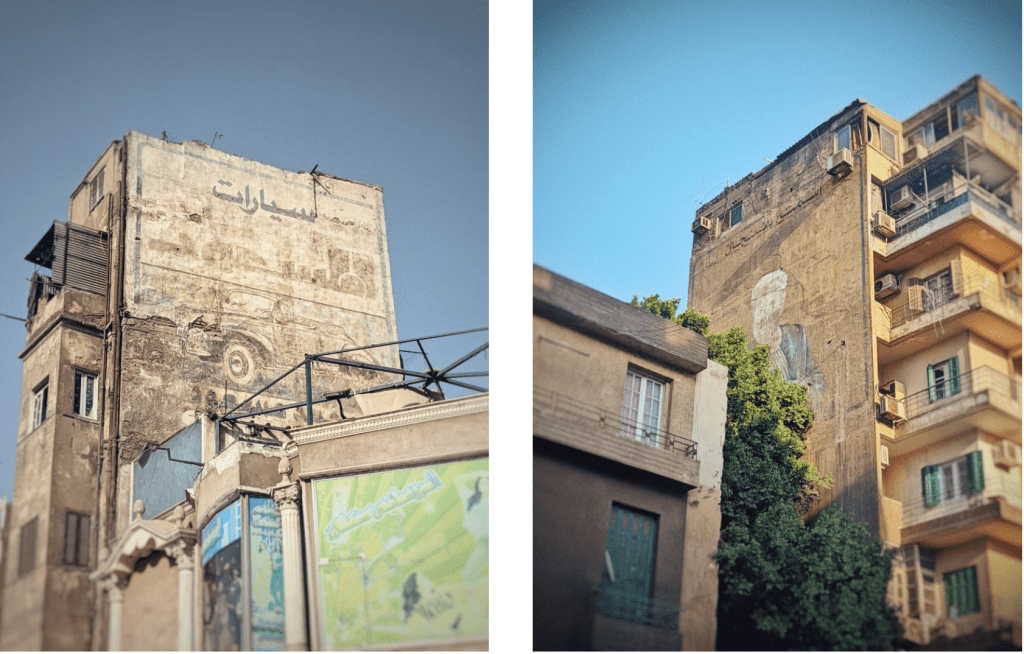
Advertisements from the period between the 1920s until 1952, under the reign of King Fouad I and then King Farouk, are often in French or English. This would have been to appeal to foreign nationals and the class of educated middle and upper-class Egyptians known as the efendiyya. In this period, it was these social classes that had disposable incomes and the adverts from this time present the wants and aspirations of these groups. Advertisements can be seen that present gleaming automobiles, that beacon of modernity of personal success, and fine wines and spirits, enjoyed not just for their taste or effect but their status-giving abilities.

In the period of President Gamal Abdel Nasser following the Egyptian revolution’s overthrow of King Farouk and by extension imperial and colonial influence on society and politics, the advertisements began to tell a different story. Local Egyptian brands from this period plaster the walls proudly in Arabic and began advertising foodstuffs like tea and breakfast cereals. These types of adverts present a new consumer base of a rising and expanding Egyptian middle class that began with Egyptian independence.
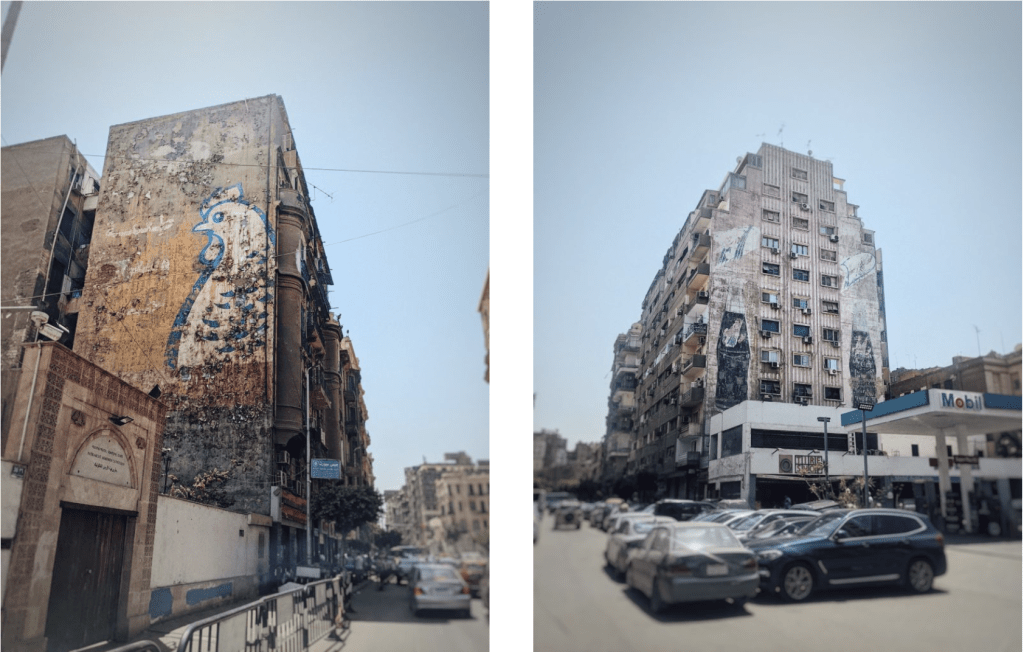
With later adverts featuring multinational companies like Coca Cola, Ariel, BiC and Schwepps, we can see the opening of the Egyptian economy to international investment and products under President Sadat’s intifah policy of 1973. Around this period, we also see the absence of alcohol adverts, representing changing attitudes to drinking as it became a much more private affair, hidden away from the public eye.
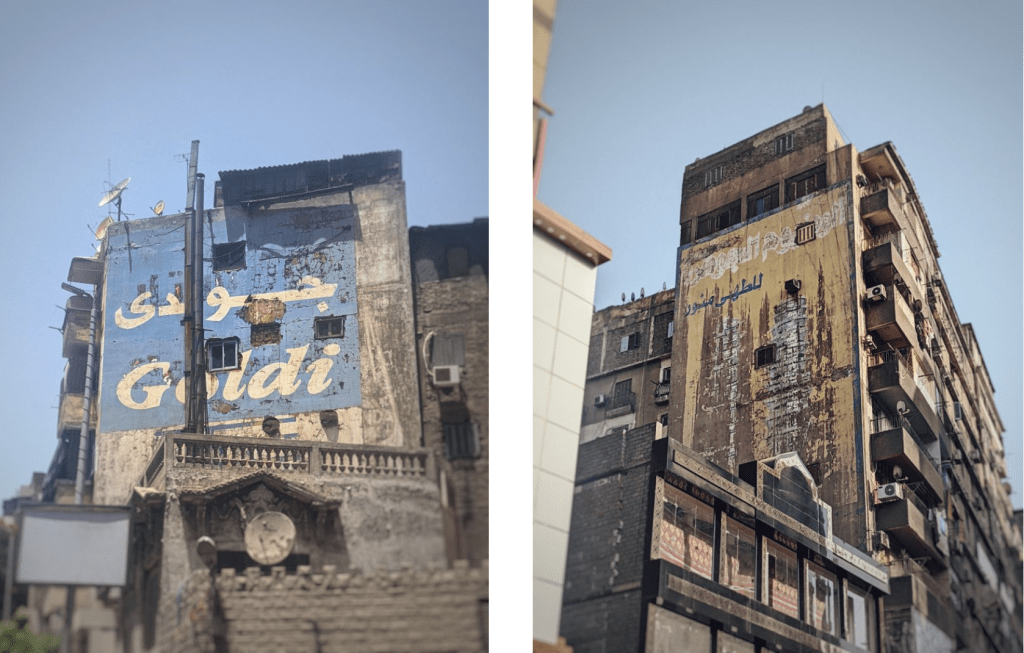
In the peeling paint and faded tones of these sun-baked painted advertisements, we see a window to a past so different from its contemporary surroundings. As modern cars pass along flyovers by hundred-year-old adverts for cars that now belong only in museums, kiosks sell Coca Cola and Sprite overshadowed by large adverts for Egyptian soft drinks, now no longer available, and alluring images of brandy and champagne sit above now comparatively conservative streets, we see what historian David Lowenthal meant when he commented that ‘the past is a foreign country’.
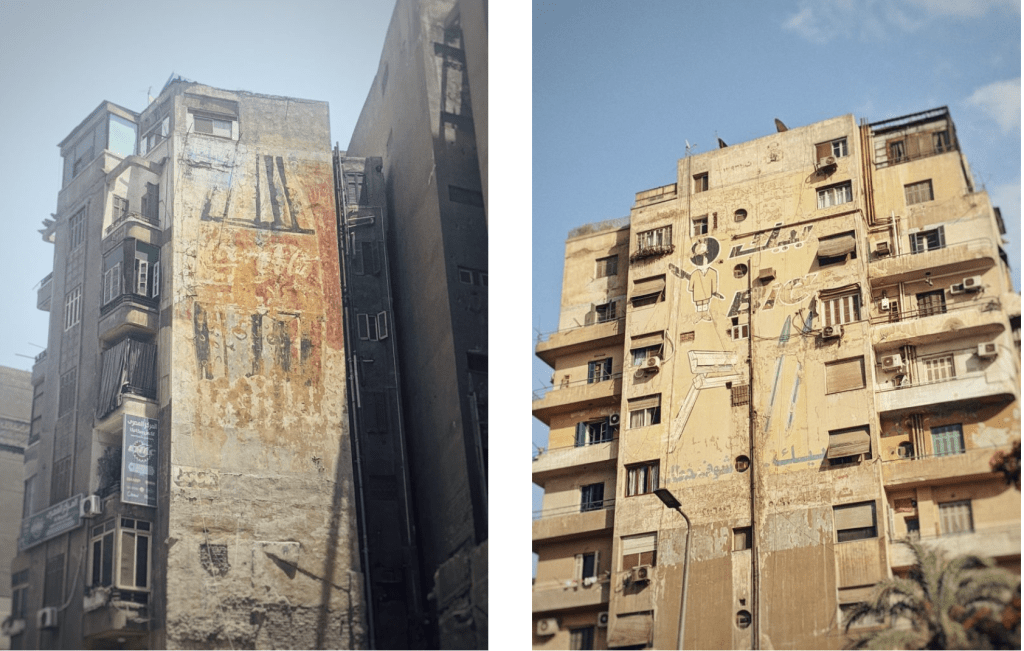
These billboards act as a collective memory and help add colour and texture to tales of how the city was as told by older family members, neighbours and friends. Letting our minds wonder when looking upon these murals, it is easy to escape and imagine how these streets once were. This collective memory, even for those born decades after, acts not as an instrument for exploring the past but its theatre, to paraphrase Walter Benjamin.
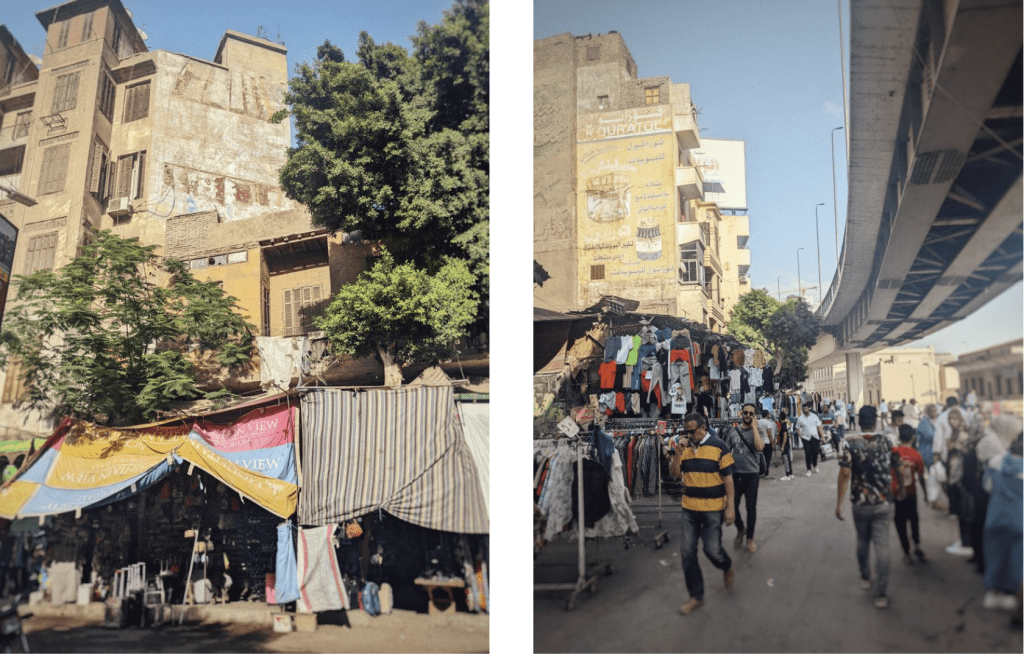
However, their existence in the city, and not a museum, illustrates not a static notion of heritage or nostalgia, but presents a narrative of a past time in its relation to the present ever-changing city. According to novelist James Baldwin, ‘history is not the past, it is the present’, and in these old painted adverts we can read into a history that has shaped and formed the contemporary city seen just beyond the frame of the billboard.
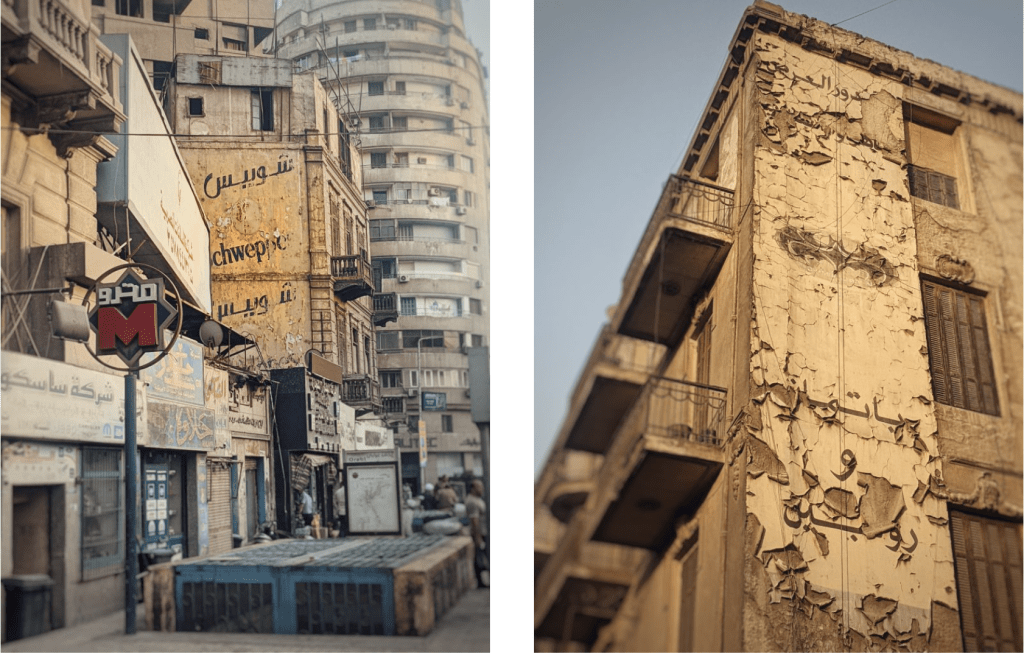
These billboards have also become an inseparable part of Cairo’s visual identity for many, adding a charm and texture to neighbourhoods. As part of a wider collage of shop signs, buildings, trees and everyday life in Cairo, they are an important part of the city’s visual fabric. Acknowledging their importance to the aesthetic of modern-day Cairo, a few years ago a project by the name of Dead Walls aimed to document and map these painted murals, and argued for their acceptance as part of the accepted heritage and visual identity of Cairo.

On long walks throughout Cairo to find and photograph these painted billboards, my head was fixed firmly upwards and familiar streets uncovered to me fascinating and attractive painted adverts hidden between buildings peaking out from above modern signage of the shops below. While impressed at the unexpected finds, so too did I find myself discouraged when seeking out particular billboards I’ve seen in the past, to find one whose building had been bulldozed, one whose building had simply just collapsed a year prior, and another that had been painted over in an oppressive cream hue as part of a supposed ‘beautification’ project in the area.
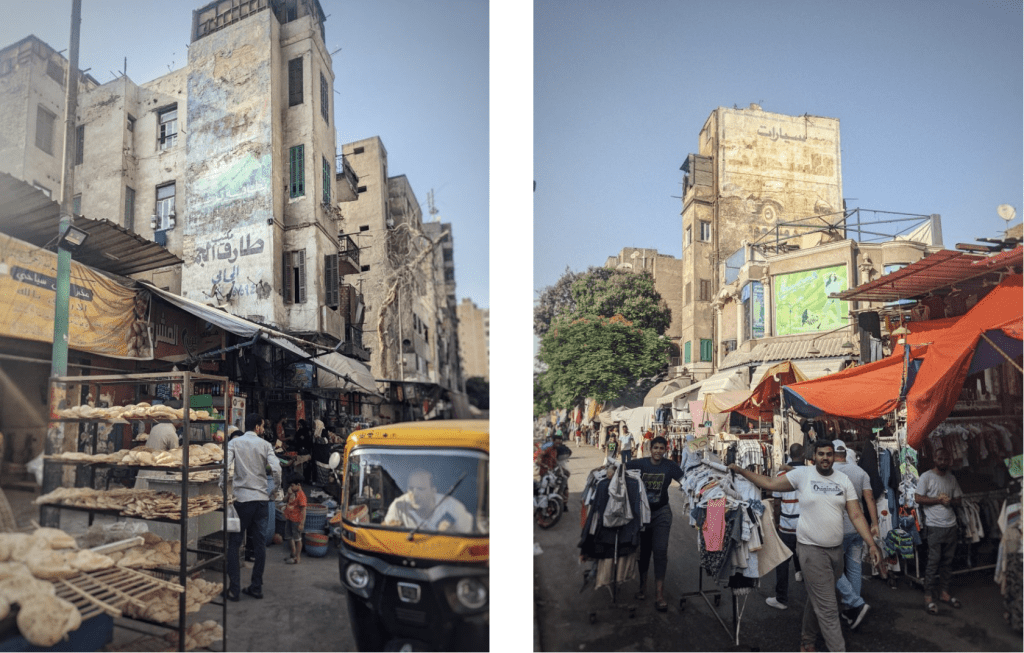
While most people presumably pass these adverts on their commute with little regard for them and little official recognition of their importance, they will only truly be missed when they’re gone. They may not be as beautiful as Mamluk mosques or as impressive as the pyramids, but they are an inseparable part of Cairo’s visual identity that add charm and texture to the city, and the historical periods they peer into to have sculpted the nation’s current reality just as much as any other.
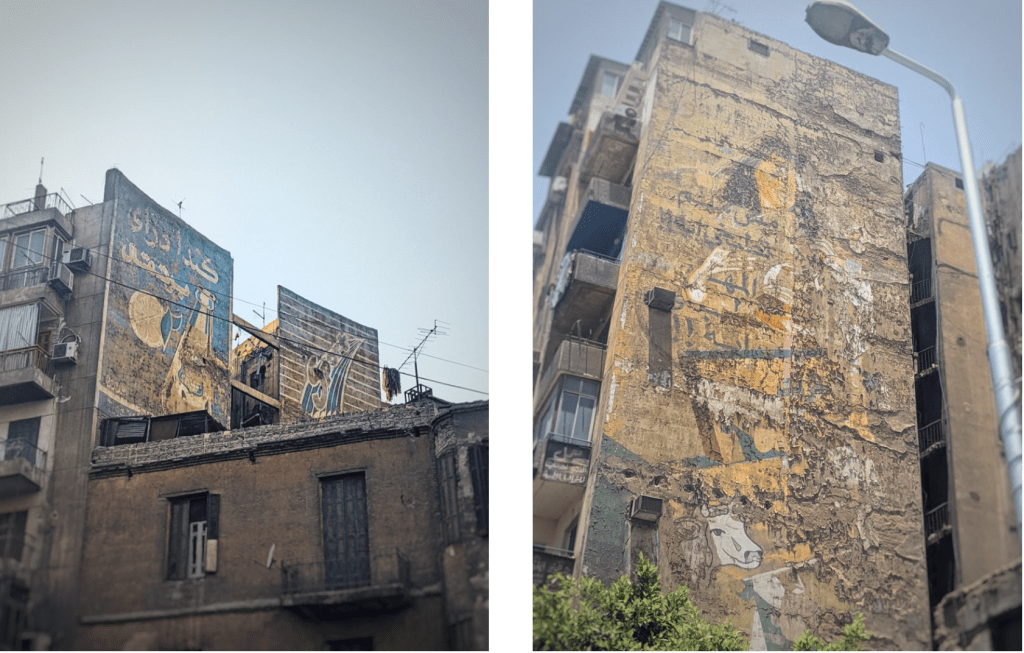
Next time you’re out and about, take a look up and see what you can find.
Photographs by the author.
WE SAID THIS… Celebrating World Oceans Day With The Uniquely Egyptian Art Of Khayyāmiyah


